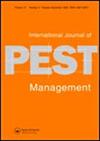Who is feeding on the pear psylla? Applying molecular ecology for the biological control of Cacopsylla bidens
IF 1.1
4区 农林科学
Q3 ENTOMOLOGY
引用次数: 2
Abstract
Abstract Biological control is an alternative strategy to control Cacopsylla bidens. The aim of this study was to untanglethe trophic network involving C. bidens as prey. Molecular techniques along with predator activity surveys were employed to evaluate predation on psylla. Feeding on C. bidens was detected for five predators: Chrysoperla externa, Chrysopidae sp., Hemerobiidae sp., Harmonia axyridis and Cycloneda sanguinea. All these predators begin to feed earlier in the season, apart from C. externawhich fedds from the third psylla generation. These results will allow the development of strategies to increase the presence of these predators in the orchards.谁在吃梨木虱?应用分子生态学方法防治小矮嵩草
摘要生物防治是一种可替代的防治策略。这项研究的目的是解开涉及作为猎物的C.bidens的营养网络。分子技术和捕食者活动调查被用来评估对木虱的捕食。五种捕食者以轮虫为食:外部金花虫、金花虫科、Hemerobiidae sp.、异色谐波虫和血环虫。所有这些捕食者都在这个季节的早些时候开始进食,除了从第三代“锡拉”开始进食的外来C。这些结果将有助于制定策略,增加这些捕食者在果园中的存在。
本文章由计算机程序翻译,如有差异,请以英文原文为准。
求助全文
约1分钟内获得全文
求助全文
来源期刊
CiteScore
4.70
自引率
6.70%
发文量
74
审稿时长
>12 weeks
期刊介绍:
International Journal of Pest Management publishes original research papers and reviews concerned with pest management in the broad sense, covering the control of pests (invertebrates, vertebrates and weeds) and diseases of plants, fungi and their products – including biological control, varietal and cultural control, chemical controland interference methods.
The management of invasive species is of special interest. We also encourage submissions dealing with interactions of multiple pests such as arthropods and plant pathogens, pathogens and weeds or weeds and arthropods as well as those dealing with the indirect and direct effects of climate change on sustainable agricultural practices.

 求助内容:
求助内容: 应助结果提醒方式:
应助结果提醒方式:


